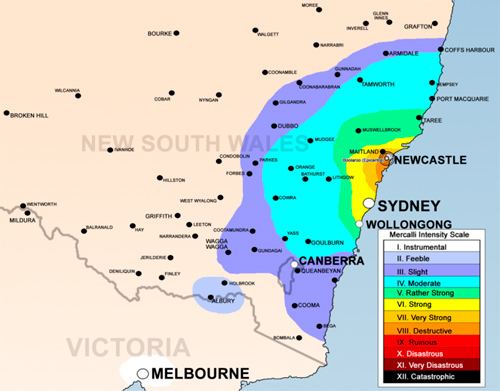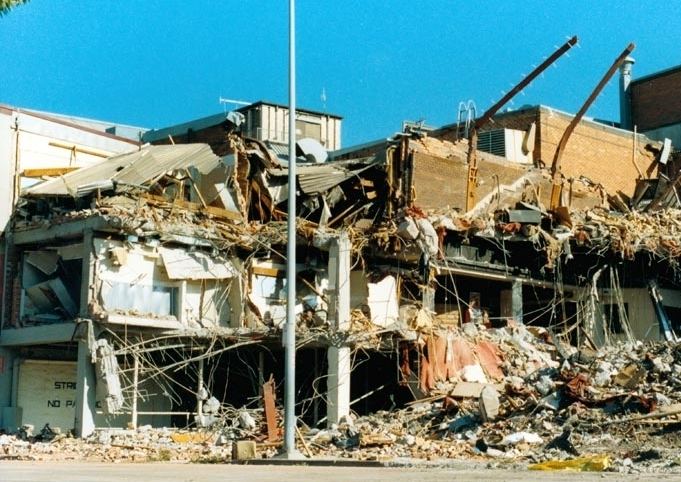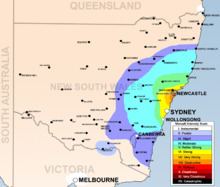Origin time 10:27 a.m. Max. intensity VIII (Severe) Date 28 December 1989 Number of casualties 13 | Depth 11,500 m Total damage 4 billion AUD | |
 | ||
Magnitude 5.6 ML (5.4 M b {displaystyle M_{b}} ) Similar June 2007 Hunter Region a, 1989 Loma Prieta earthquake, 1997 Thredbo landslide, Ash Wednesday bushfires, Granville rail disaster | ||
On this day 28th of december 1989 newcastle earthquake
The 1989 Newcastle earthquake occurred in Newcastle, New South Wales on Thursday, 28 December. The shock measured 5.6 on the Richter magnitude scale and was one of Australia's most serious natural disasters, killing 13 people and injuring more than 160. The damage bill has been estimated at A$4 billion (including an insured loss of about $1 billion).
Contents
- On this day 28th of december 1989 newcastle earthquake
- Death toll and damage to buildings
- Statistics
- Cause
- In popular culture
- References

The effects were felt over an area of around 200,000 square kilometres (77,000 sq mi) in the state of New South Wales, with isolated reports of movement in areas up to 800 kilometres (500 mi) from Newcastle. Damage to buildings and facilities was reported over an area of 9,000 km2 (3,500 sq mi).

Death toll and damage to buildings

The highest death toll and damage occurred at the Newcastle Workers Club, where the floor collapsed and nine people were killed and many more trapped beneath rubble. Another three people were crushed to death under collapsed awnings on Beaumont Street, Hamilton, an inner-city suburb of Newcastle. Following the death of a woman in Broadmeadow from earthquake-related shock, the final death toll was raised to 13.

The earthquake caused damage to over 35,000 homes, 147 schools, and 3,000 commercial and/or other buildings, with significant damage caused to 10,000 homes (damage worth over $1,000) and 42 schools (structural damage), within the immediate Newcastle area.

The number of people in the city on the day of the earthquake was lower than usual, due to a strike by local bus drivers. The earthquake struck in the middle of an interview by local television station NBN with a union representative.
Statistics

Cause
In early 2007 a United States academic claimed that coal mining in the region triggered the earthquake, although earthquake activity has been present in the area at least since white settlement first occurred. This is in addition to reports by the former head of Geoscience Australia's earthquake monitoring group, Dr David Denholm, who stated that the Newcastle earthquake was some distance from mining activity:
"The depths of the focus of the earthquake was about 13, 14 kilometres, whereas the ones associated with mining, they're actually right close to the mine, because that's where the stress release takes place".
Despite this, even the most recent earthquake codes required neither the adoption of earthquake resistant design regulations in Newcastle, nor the strengthening of old buildings, although they did encourage owners to provide more than the minimum strength.
In popular culture
Songs about the Newcastle earthquake include "Earthquakin'", recorded in January 1990 by Newcastle Ska Band The Porkers, and "Faultline" by Australian rock band Silverchair, from 1995. Silverchair lead singer Daniel Johns lost a childhood friend during the earthquake. Patrick Cullen's collection of stories, "What Came Between", begins with the earthquake. Aftershocks, a 1991 play by Paul Brown, is based on interviews with members of the destroyed Newcastle Workers Club.
